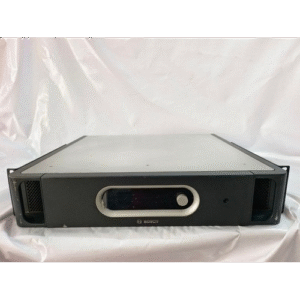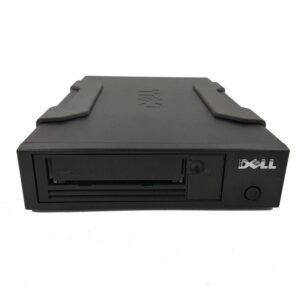- AUTOMATION EQUIPMENT
- ELECTRICAL ITEMS
- AMPLIFIER & UPS
- BATTERY CHARGER & INVERTER
- CIRCUIT BREAKER & BLOCKS
- CONTROL UNIT
- ELECTRIC CONTROLLERS
- FIRE ALARAM SYSTEM
- FUSES & CAPACITOR
- HEADPHONE & SPEAKER
- HMI & DISPLAY
- MISC ELECTRICAL
- PCB
- PLC SYSTEMS
- POWER SUPPLY
- PRINTER & CPU
- RELAY
- SENSORS
- SERVO DRIVES & MOTORS
- TELECOME & COMMUNICATION
- THERMOSTAT
- UNCATEGORIZED
CREVIS FnIO-S MODBUS TCP NA-9289 Slave Node Adapter W/ ST-RTB
₹11,747.00
| Product Conditioned | USED |
|---|
Free Shipping apply to all orders over $199
Guaranteed Money Back in 30 days return.
24/7 Customer Support
Share:
Hotline Order:
(+101) 5620 - 8155
Email ID:
xstore@support.com
The CREVIS FnIO-S NA-9289 is a modular I/O (Input/Output) system designed to act as a Modbus TCP Slave (Server) on an Ethernet network. Its core function is to gather data from a variety of industrial sensors and devices (like switches, temperature sensors, pressure transducers) and make that data easily accessible to a central control system (like a PLC, SCADA, or HMI) over a standard Ethernet network using the Modbus TCP protocol.
The inclusion of “W ST-RTB” indicates it is sold as a kit that includes the necessary spring-terminal wiring boards (ST-RTB) for easy connection of field devices.
Component-by-Component Breakdown
-
CREVIS: The manufacturer. CREVIS is a company known for its automation and control products, particularly its modular and distributed I/O systems.
-
FnIO-S: This is the product family name.
-
FnIO likely stands for “Flexible Network I/O.”
-
The “-S” suffix typically denotes the “Slave” version in a master-slave network architecture.
-
-
MODBUS TCP: This is the communication protocol.
-
Modbus is one of the world’s oldest and most widely used industrial communication protocols. It is simple, open, and royalty-free.
-
TCP means it runs over standard Ethernet (TCP/IP), allowing it to be integrated easily into modern factory networks and connect over long distances using standard network infrastructure.
-
-
NA-9289: This is the specific model number for the main communication adapter or “brain” of the node.
-
The NA stands for Node Adapter. This is the module that handles network communication, power distribution, and data management for the entire I/O node.
-
The numbers (9289) are CREVIS’s specific identifier for this Modbus TCP Slave version.
-
-
Slave Node Adapter: This defines its role in the network.
-
In a Modbus network, a “Slave” (or “Server”) is a device that provides data to a “Master” (or “Client”) upon request. The NA-9289 cannot initiate communication; it only responds to commands from a master device (e.g., a PLC).
-
The “Node Adapter” is the base unit that forms a “node” on the network. You plug various I/O modules (for digital inputs, analog outputs, etc.) directly into this adapter to create a customized I/O station.
-
-
W ST-RTB: This is a crucial part of the package.
-
“W” stands for “With.”
-
ST-RTB stands for Spring-Terminal Removable Terminal Block. These are the pluggable screw terminals that you actually wire your field devices (sensors, actuators) to. They are not soldered, making installation, maintenance, and replacement much faster and easier.
-
-
SEO PRODUCT DESCRIPTION: This part of the string is not a product feature but a note, likely for internal or web catalog use, indicating that the text is intended for Search Engine Optimization to help customers find this product online.
Key Features & Capabilities
-
Protocol: Modbus TCP (Slave/Server)
-
Network: Standard 10/100 Mbps Ethernet.
-
Modularity: The Node Adapter (NA-9289) accepts a wide range of plug-in I/O modules (e.g., DI, DO, AI, AO, RTD, Thermocouple).
-
Easy Wiring: Includes spring-clamp terminal blocks (ST-RTB) for tool-less, secure wiring.
-
Distributed Architecture: Allows you to place I/O points directly on the machine or in the field, close to the sensors and actuators, reducing wiring costs and complexity.
-
Configuration: Typically requires simple configuration (e.g., setting the IP address and slave ID) via DIP switches or software tools.
Typical Applications
This device is used in industrial automation and control systems across various sectors:
-
Manufacturing & Assembly Lines
-
Building Management Systems (BMS)
-
Process Control
-
Material Handling
-
Water/Wastewater Treatment
-
Connecting a bank of sensors (e.g., photoelectric sensors, limit switches) to a central PLC.
We're here when you need us
Get a Quick Quote
Complete our online form.
Call US
Speak to one of our team.
Live Chat
Send us a message
Speak to one of our team.















